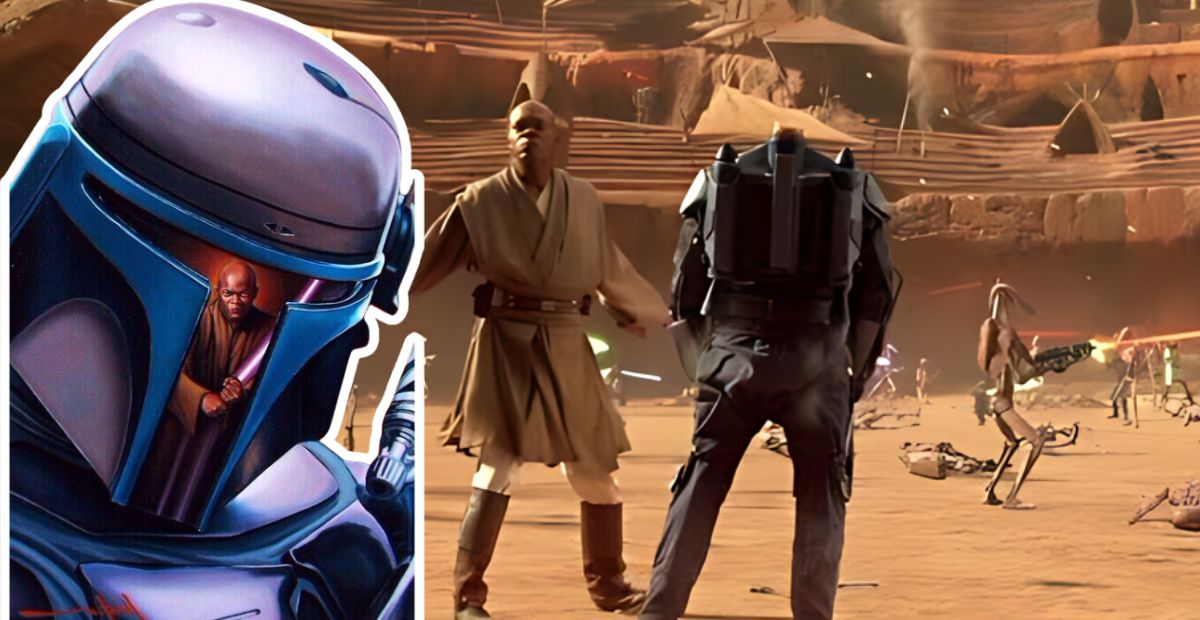By reading the title, you’re probably curious about the original, uncut death scene of Jango Fett.
In “Star Wars: Episode II – Attack of the Clones,” Jedi Master Mace Windu dramatically ends Fett’s life, but if you’ve ever wondered how the original scene played out before it was edited, you’re in for a surprise – it was even more brutal.
In the final version, Jango Fett meets his end during the Battle of Geonosis when Mace Windu beheads him with a single, swift stroke of his lightsaber.
This scene is impactful and memorable, but it underwent several iterations before the filmmakers settled on the final cut.
The deleted scene, however, is quite different and much more graphic.
In this version, Windu first cuts off Jango’s blaster, then uses the Mou Kei technique to sever Jango’s left arm.
He follows this by stabbing Jango in the right thigh with his lightsaber. Finally, Windu beheads Jango, just as we see in the final cut.
The production team experimented with various ways to shoot and animate Jango’s death.
Practical effects, combined with CGI, were considered to enhance the realism of the beheading.
Some early test footage included more visceral details, such as showing the impact of Windu’s lightsaber on Jango’s armor and the subsequent dismemberment.
But they had to change it.
One of the primary reasons for altering the original death scene was to ensure the movie remained appropriate for a younger audience.
To secure a PG rating, the filmmakers needed to minimize graphic violence, which is crucial for a franchise like Star Wars that appeals to a broad demographic.
Additionally, the pacing of the Battle of Geonosis was a significant consideration. A prolonged death scene could disrupt the flow of the intense, fast-paced battle sequence.
Simplifying Jango’s death helped maintain the scene’s momentum.

